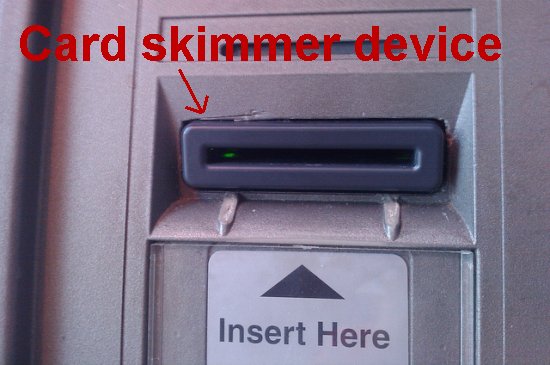
You may think that as long as you're alone at the ATM, your financial data is safe, but that's not necessarily true. Thieves are now using high-tech tools to steal card information and PIN numbers that you may not even notice unless you're on the lookout. It's important that you are careful every time you use an ATM to make sure prying eyes or prying technology aren't trying to steal your info. Here are five tips to keep your money safe at ATMs.
#1 Protect your PIN – This involves several steps. First is selecting a PIN that can't be easily figured out. This eliminates birth dates, house numbers, social security number, phone numbers, etc. The best bet is to use the random number that your bank assigns to you when they send your card. Although it will be an adjustment to memorize it, it's worth the extra brain power. No one should be able to guess a totally random number. Also, don't write it down and don't tell it to anyone. If you have to have someone run an errand for you that requires a card, you're better off letting them use your credit card rather than your debit card.
#2 Check the ATM – Before you swipe your card at an ATM, check it out to make sure it looks okay. The photo above shows an ATM that has a card skimmer attached. This is a device that records the data on the magnetic strip of your card. Thieves also place either a false key pad (that looks authentic) or a pinhole camera to record your PIN number. With the magnetic data and PIN, scammers can create an identical card and use your PIN with it to drain your account. If you look at the photo, you'll see the scratches around the reader and the fact that it's not made of the same material is a clue. If the ATM looks suspicious, give it a pass.
#3 Be aware when using the ATM – You should also be aware of old fashioned thievery including bystanders peeking to see your PIN, physically taking your card from you or criminals that will lurk and simply steal your cash after you get it from the ATM. Avoid any ATM that isn't properly lit, has anyone shady lurking around it or is in an unsavory location. Also, use your free hand to obscure your PIN as you enter it in case prying eyes are looking or there's a camera trained on your hand movements. If you're in a drive-up ATM, make sure your doors are locked and roll up your window ASAP after you get your cash. You just never know who's looking to steal from you, ATM cash grabs are prevalent and skimmers are growing even more common.
#4 Consider getting cash back – Also realize that there are other options to the ATM for getting cash. Cash back at the grocery store or WalMart is cost-free and may be more secure than finding an ATM. Plus, if you use an out-of-network ATM, you'll pay hefty fees to get your money. Also, swiping your card at the store (most of the time) carries less of a risk than at the ATM. Would-be thieves can't tamper with card readers at cash registers without being noticed and there's no good place for crooks to hide a camera. Most stores will allow you to get at least $50-$100 back. You can also just go into your bank to get cash where there should be no risk at all.
#5 Report card loss/theft immediately – If you ever mislay your ATM card or if it is stolen, report the loss immediately. Here's why. While credit card issuers allow you more leeway in reporting a card lost or stolen and generally won't hold you liable for unauthorized charges, bank-issued ATM and debit cards do not carry such generous provisions. If you report the theft/loss within two business days, your liability won't exceed $50. After two days but before 60 days, you can be liable for up to $500 of illicit charges or withdrawals. Past 60 days, whatever damage is done is your problem. This is nothing to mess around with. If you even suspect that your card may have gone missing, you're better safe than sorry – so report it. Also, check your activity frequently – most banks now offer an app so you can monitor your account and notify the bank if you see any illegitimate ATM or debit activity.
